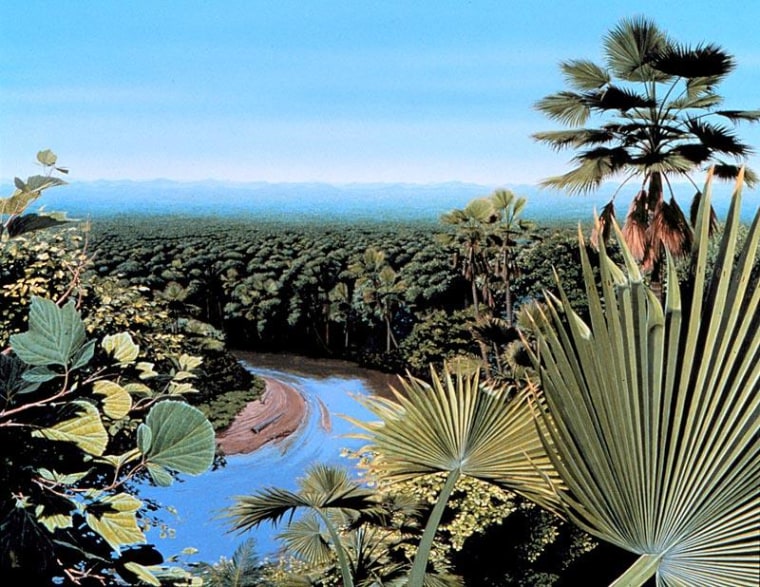The killer meteorite that extinguished the dinosaurs also torched North America's forests and plants. The harsh conditions after the impact favored fast-growing flowering plants, nudging forests toward a new pecking order, a new study reports.
As a result, today's forests would baffle a Brachiosaurus. Most of the slow-growing trees and shrubs that were munched by dinosaurs are minor players in modern forests, because the plants couldn't adapt to post-impact climate swings, researchers reported Tuesday in the journal PLOS Biology.
"When you look at forests around the world today, you don't see many forests dominated by evergreen flowering plants," lead study author Benjamin Blonder said in a statement. "Instead, they are dominated by deciduous species, plants that lose their leaves at some point during the year."

Dinosaurs stomped through forests ruled by evergreen angiosperms, which never drop leaves. Angiosperms are flowering plants, grasses and trees, excluding conifers like spruce and pine. [See Photos of a Fossilized Forest in the Canadian Arctic]
Fossil records show that angiosperms of all kinds thrived before a meteorite crashed into Earth 66 million years ago. That stupendous blast charred vast woodlands that had grown from Canada to New Mexico. In North America, about 60 percent of plant species went extinct, according to earlier studies.
After the blaze, deciduous angiosperms bounced back much better than the evergreens.
Blonder, an ecologist at the University of Arizona in Tucson, wanted to know why. The researchers pored through thousands of prehistoric leaves from Wyoming's Hell Creek Formation. Based on their analysis, the researchers said the properties of the plant leaves likely helped them withstand the bleak climate. The dark years after the impact pushed ecosystems toward plants with faster growing strategies, Blonder told LiveScience via email.
"Our study provides evidence of a dramatic shift from slow-growing plants to fast-growing species," Blonder said. "This tells us that the extinction was not random. And potentially, this also tells us why we find that modern forests are generally deciduous and not evergreen."
— Becky Oskin, LiveScience
This is a condensed version of a report from LiveScience. Read the full report. Email Becky Oskin or follow her on Twitter. Follow LiveScience on Twitter, Facebook and Google+.